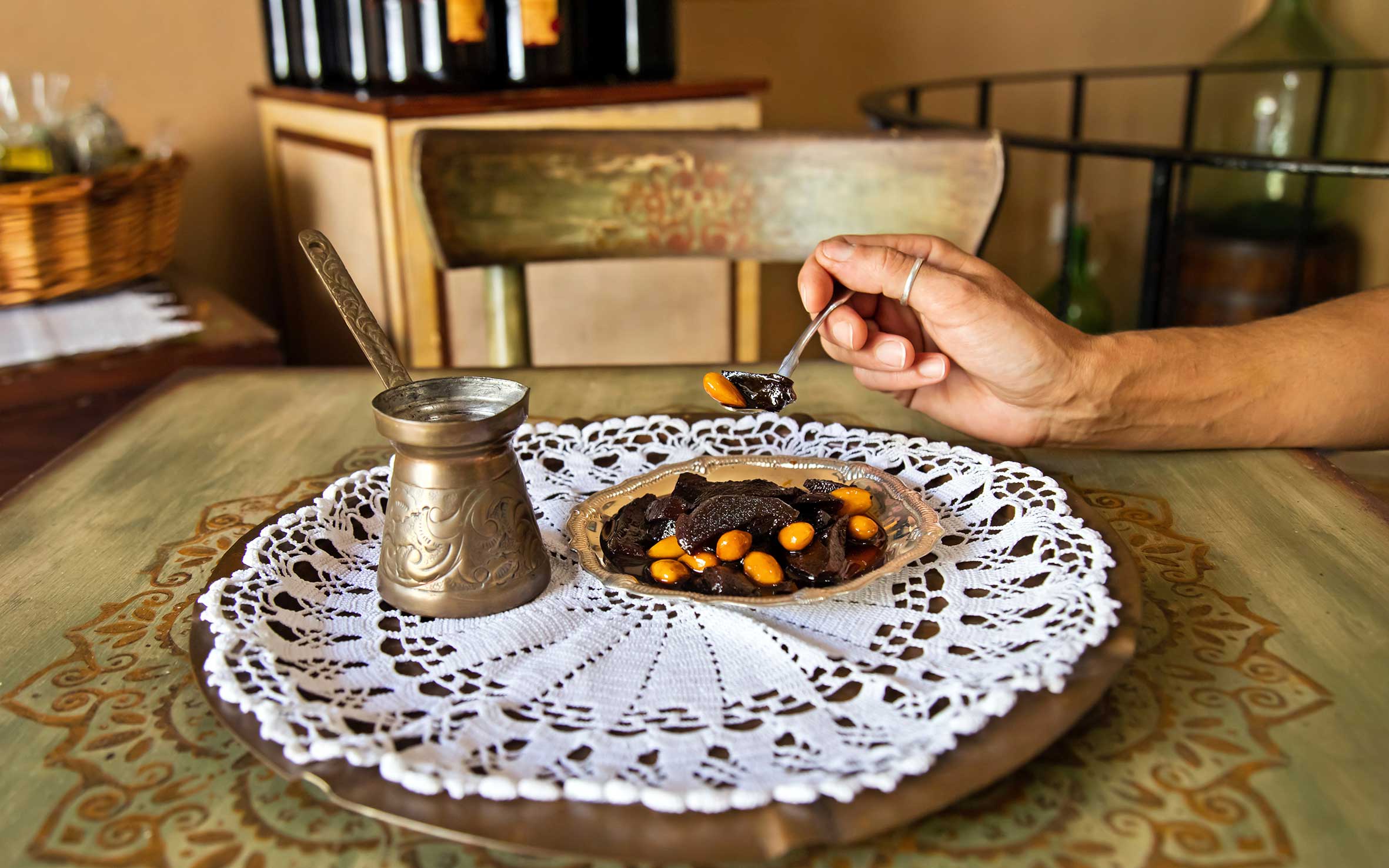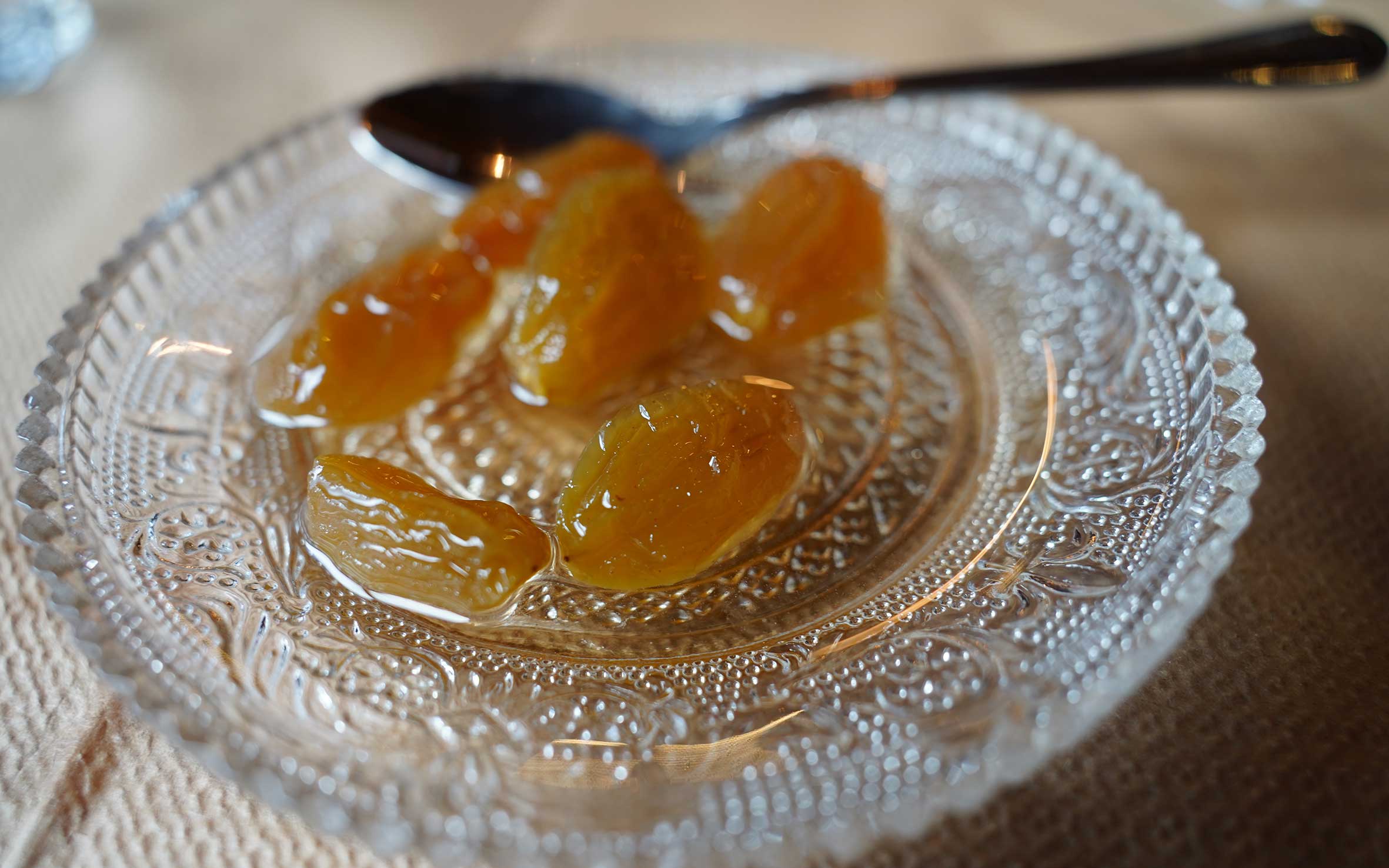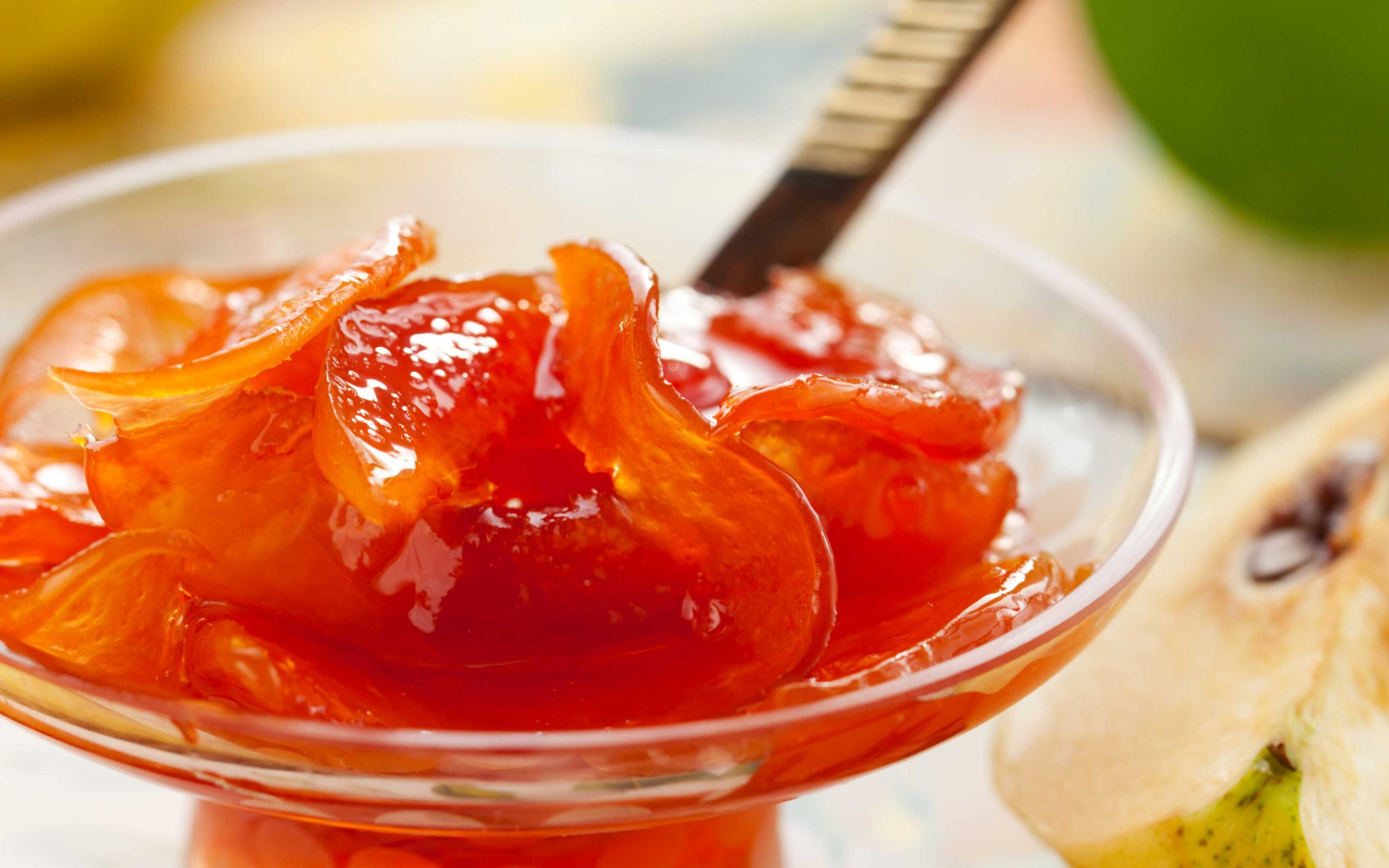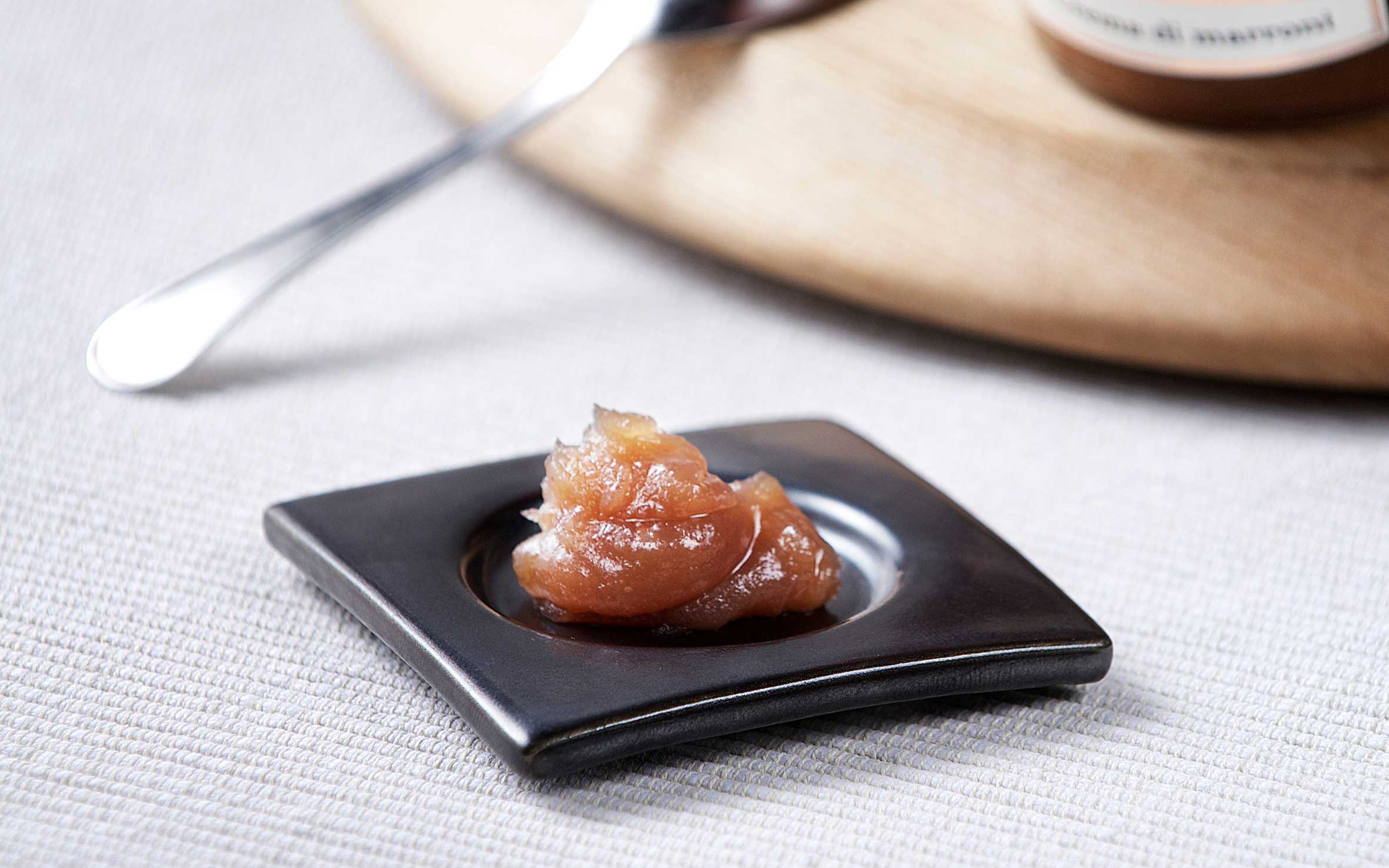A Delicious Guide to Ios
Your summer map to Ios: what...

© Shutterstock
If you’ve ever been offered syrupy preserves known as “spoon sweets” on a visit in a Greek home, you know: More than a dessert, these traditional treats serve as a symbolic gesture of hospitality.
They’re also delicious. Most locals have a favorite kind, and there are many to love, from popular variants with grapes and citrus peel, via all other kinds of fruit to ingredients like tomatoes, eggplants, nuts and olives – basically, they’re made with whatever is plentiful and in season. As with all preserves, making spoon sweets is a brilliant way to make produce last through the year. But who knew that cooking most anything in syrup will turn it into a dessert? The only requirement is that the fruit (or vegetable) is not too ripe – in fact, immature is preferable.
Spoon sweets are homemade with love almost as a rule, and presented in small servings (they’re too sweet to eat more of) on delicate plates, preferably alongside a cup of Greek coffee. You may also come across them served over ice cream or some creamy yogurt at tavernas across the country. The latter is a delicious alternative for those who prefer their dessert a little less sweet.
Below are the recipes for three classic variants: grape, quince and chestnut.

Grape spoon sweets
© Shutterstock
Recipe by Themis Papadopoulou
Wash your grapes, and remove the stems and any fruit that’s gone bad.
Drain, and place in a pot along with the sugar and orange juice.
Cook over medium heat for 10 minutes.
Remove the pot from the heat and cover it with cheesecloth or a light towel (one which will allow steam to escape). Let sit at room temperature for 24 hours.
Uncover the pot, add your geranium leaves or vanilla, and boil your spoon sweets again, for another 10 minutes or slightly longer, until the syrup has thickened.
Remove from the heat and pour into sterilized glass jars.
This recipe was previously published in Greek at gastronomos.gr.
1 kg seedless sultana grapes
750 g granulated sugar
4-5 geranium leaves, or the seeds from 1 vanilla bean
100 ml orange juice

Quince spoon sweets
© Shutterstock
Recipe by Evi Voutsina
Wash and dry your quince.
Peel the fruit, cut into quarters and remove their centers with the seeds. Then cut the fruit into thin sticks or slices.
Cover the fruit with the juice from two of the lemons in a large bowl, to avoid it turning brown.
Add the sugar and water to a large pot, and bring to a boil. Stir to help the sugar dissolve, and cook the syrup for about 5 minutes.
Drain the fruit, and add it to the pot along with the geranium leaves.
Cook, uncovered, until the syrup thickens. Once a drop of syrup of syrup dripped onto a plate stays in place, add the juice from the third lemon and cook for another 2 minutes. If using, add the almonds.
Pour your quince spoon sweet into sterilized glass jars, making sure the syrup covers the fruit. Store upside down until completely cooled.
This recipe was previously published in Greek at gastronomos.gr.
2 kg quince (weighed unpeeled)
2.2 kg sugar
2 l water
juice from 3 lemons
2-3 geranium leaves
300 g unsalted roasted almonds (optional)

Chestnut spoon sweets
© Shutterstock
Recipe by Evi Voutsina
Cut a cross through the skin of the bottom of each chestnut, and roast in a 200 C oven for 20 minutes.
Peel your chestnuts carefully. If there are segments of skin stuck to the chestnuts, add your nuts to boiling water for 10 minutes, just to allow them to soften slightly, then carefully remove the rest.
Bring the water, sugar and vanilla to a boil in a large pot. Once the syrup begins to thicken, add the chestnuts, and cook until the syrup has thickened.
Add the juice and cook for another 2 minutes.
Remove from the heat and discard the vanilla bean.
Let cool, then add your chestnuts to sterilized glass jars one by one, adding spoonfuls of syrup between them.
This recipe was previously published in Greek at gastronomos.gr.
2 kg large chestnuts, like those from the Pilio and Agia
2 kg sugar
1 l water
1 vanilla bean
3 tbsp. freshly squeezed lemon juice
Your summer map to Ios: what...
In Corinthia, just an hour from...
Beyond souvlaki lies a carnivore’s paradise,...
Discover Crete’s iconic sarikopites – delicate...